So, there’s a second part to that awesome Isla Mujeres Destination Wedding I posted about.
Brittany and Crystal wanted to do a day after “Trash the Dress” session and get in the ocean wearing their bridal gowns.
“Heck yes!” says the photographer who is writing this with two black eyes from an incident involving a bride and groom on snowboards, a six year old out of control skier, the camera and the photographer. Of course I want to get in the ocean with my camera. That sounds awesome.
So we did. Here’s a few of my favorite images from our Drown the Gown session on Isla Mujeres, along with images of me capturing them thanks to Julie Pizzo.
More on how we did it after the photos.

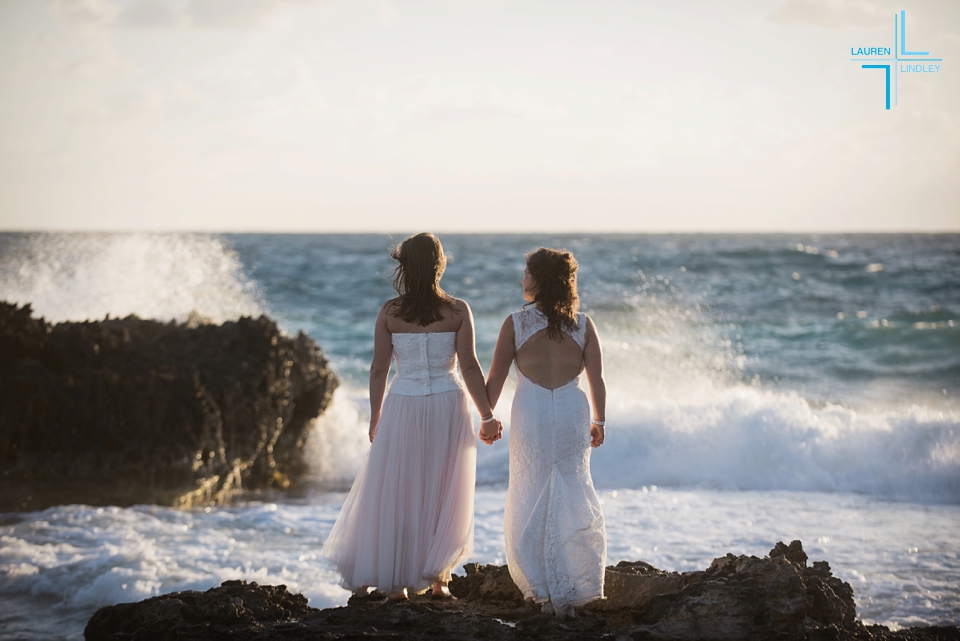

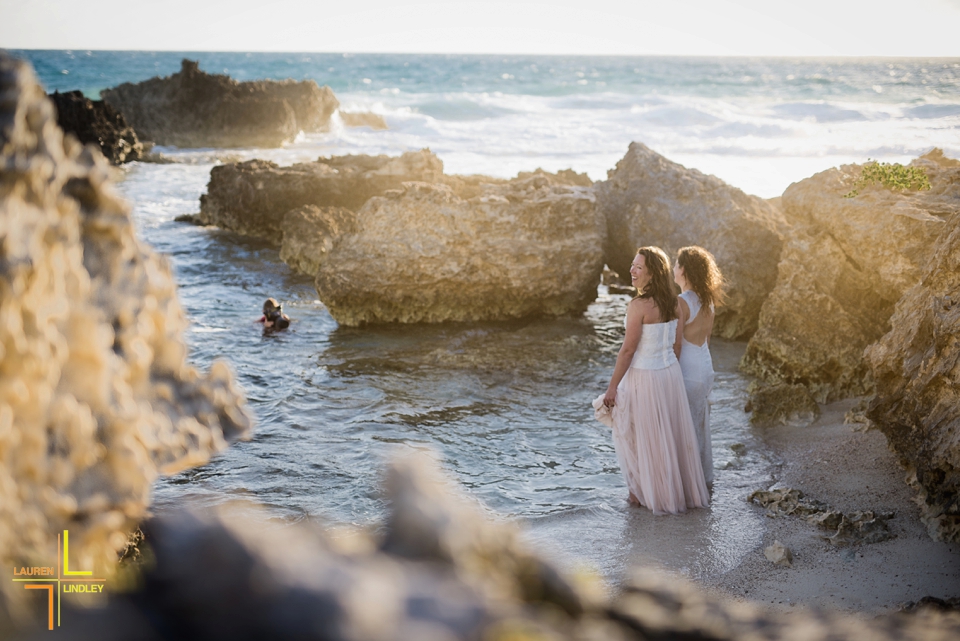
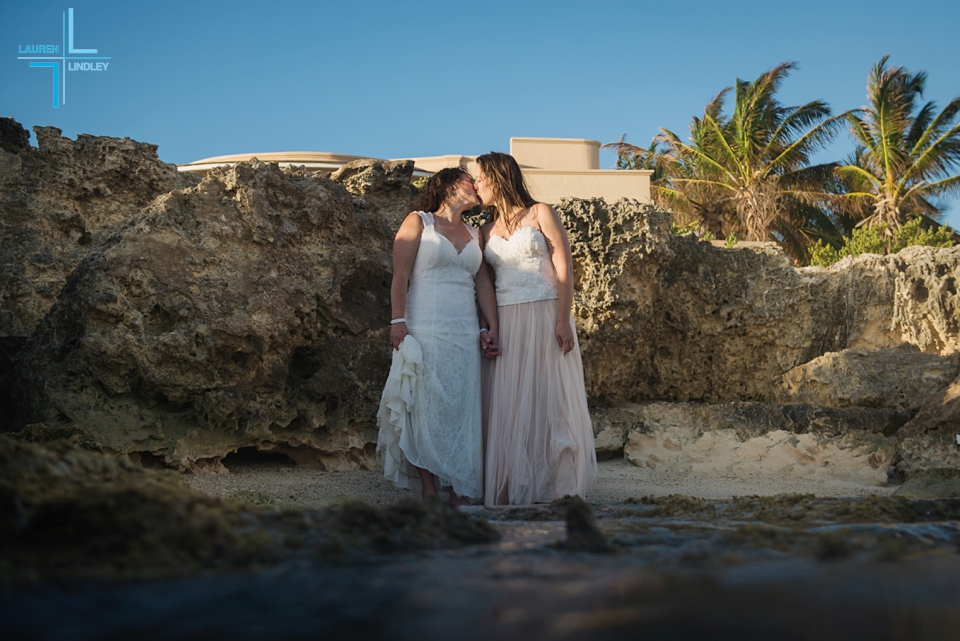

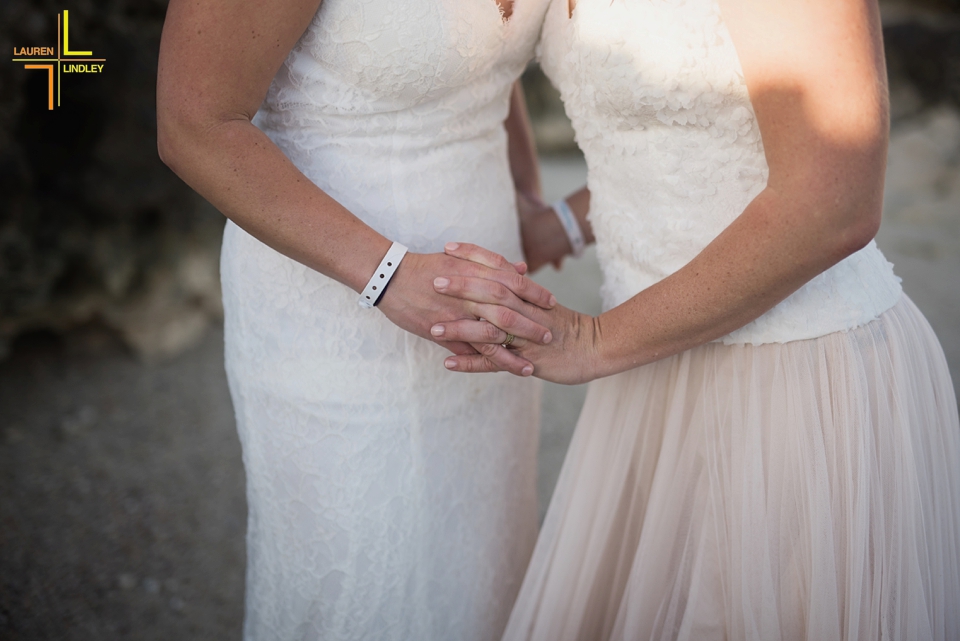

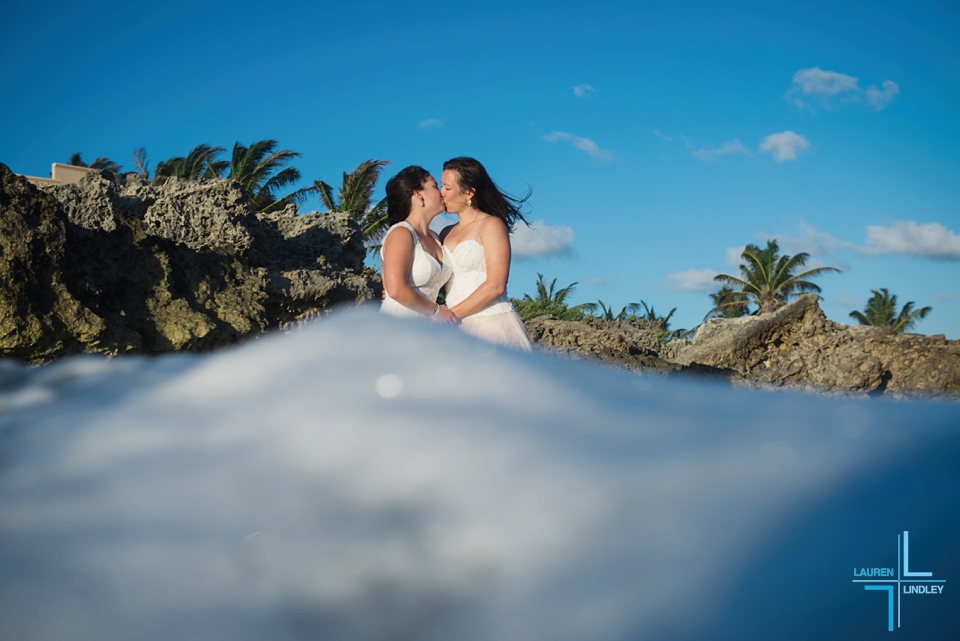

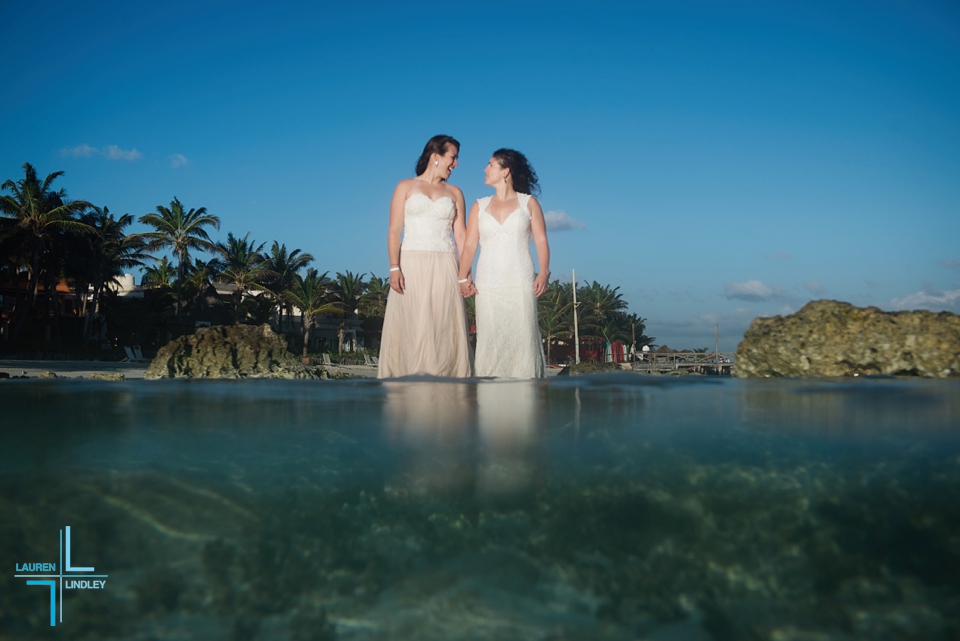


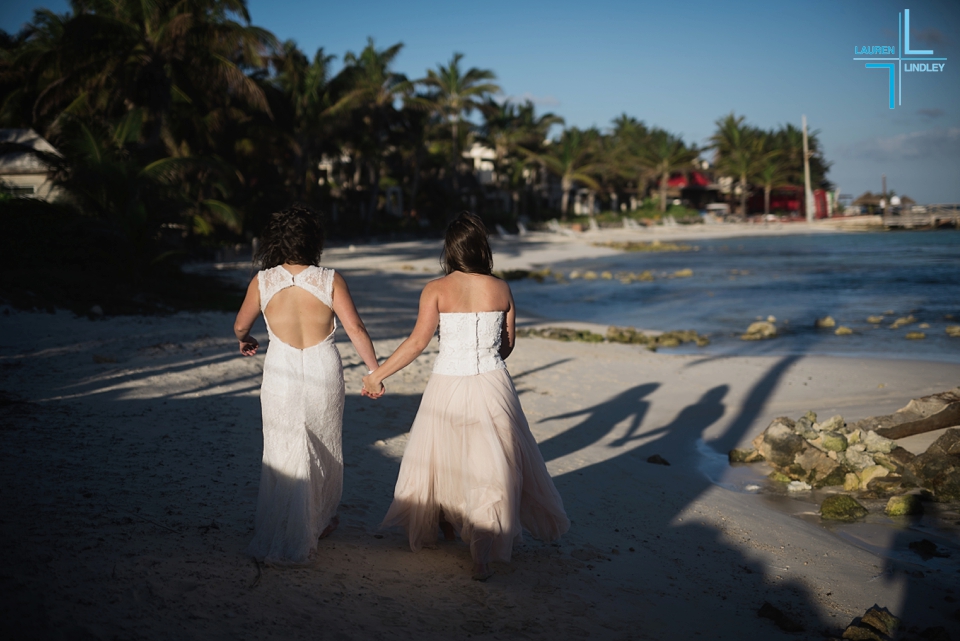
When Britt and Crys first approached me about their wedding, the first wish they expressed was that they wanted to go in the ocean and do a drown the dress session. I knew I would absolutely want to photograph it at least partially underwater, if not all the way underwater so I immediately started researching underwater photography housing for my cameras. The options are varied and so are their prices. Full functional underwater housing, such as the kind my friend Ralph Pace uses for his amazing photography of underwater sea life, for my cameras is, in general, more expensive than my camera bodies themselves. We’re talking in the $3500-$4500 range. To rent it for two weeks while I was in Mexico was almost $1000. I still considered it. My original vision was to find a super calm cove and go out early in the morning when the water was like glass and get the girls full submerged. I am now super thankful I didn’t go that route because it would have been impossible due to the weather we had the week we were in Mexico: it was blustery almost every day, all day long and it was especially windy the morning we had to photograph the session.
The next option was to go with a bag. After talking to a number of folks, I made the decision that this was the way to go and pulled the trigger on a DiCAPac WP-S10. I was told by most that it is hard to change the settings when it’s in the bag, that I would be sacrificing sharpness (which I’m fairly obsessed over), and some people said they ran it on autofocus and some said they pre-set settings and ran with it. I found it easy to change aperture and shutter speed, but impossible to change autofocus and while I had set it up to autofocus, I wish that I had just chosen one of the focus selections in the top, middle of the frame and run with that. Overall, I’m super stoked on what we captured. I think it’s dreamy, passionate and makes you feel like you too could get swept away by the heat of the moment. You can almost hear those waves crashing.
Everything that isn’t partially underwater is shot with the Nikon D750 and either the Sigma Art 50 or the Nikkor 70-200. Everything that was taken partially underwater is the Nikon D800 and the Nikkor 24-70.
Location: Isla Mujeres | Second Shooter: Julie Pizzo | Camera: Nikon D800 and D750 | Waterproofing: DiCAPac
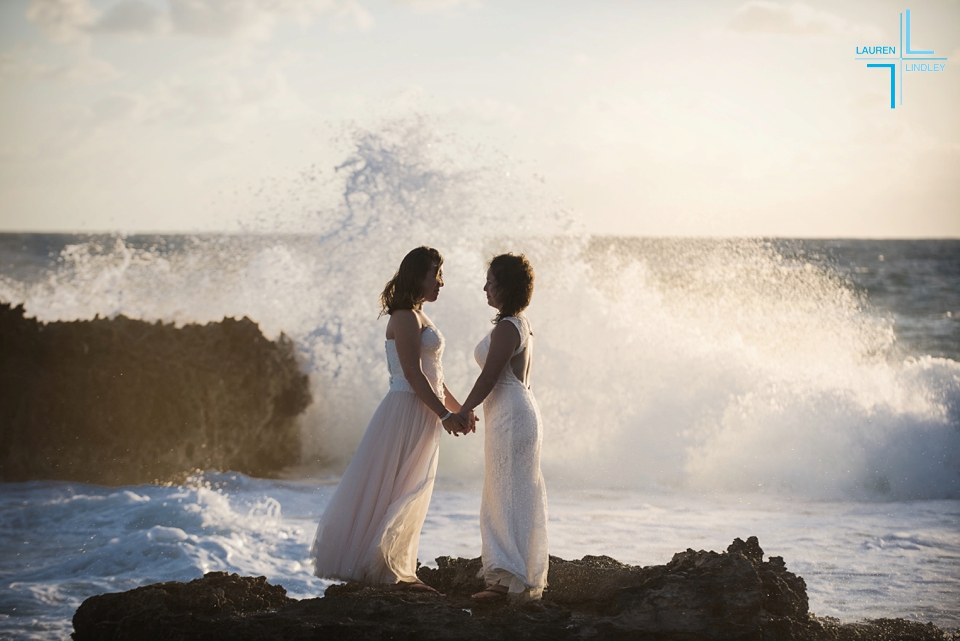

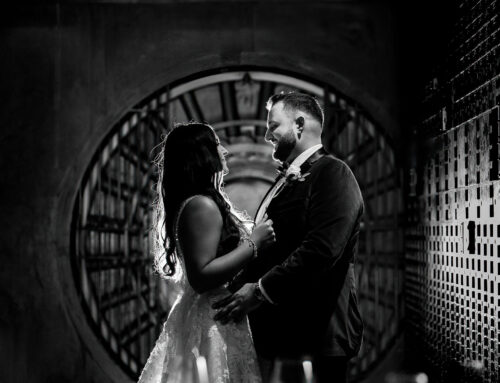


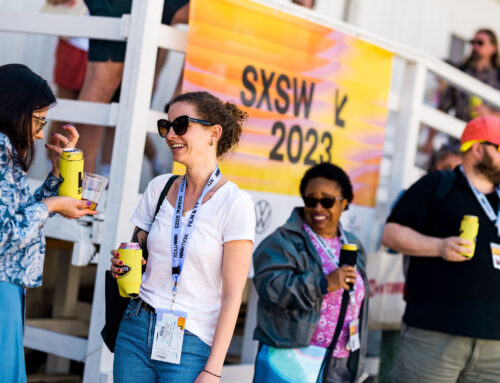
Such a fun morning!!!! Thank you Lauren for going for it.. And thank you Julie for capturing the action!